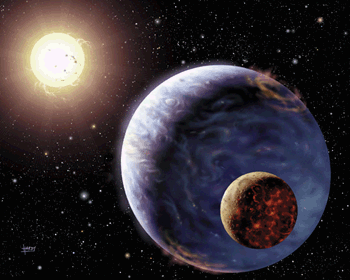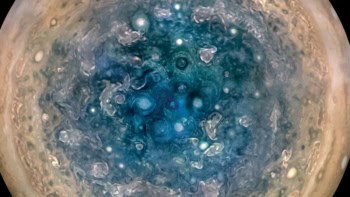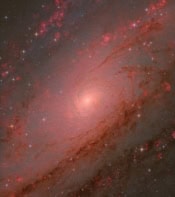The hunt for planets orbiting distant stars has been boosted by the discovery that such stars should be surrounded by a tell-tale disc of dust. Markus Landgraf of the European Space Agency (ESA) and colleagues have found the first direct evidence that such a disc exists in our own Solar System, beyond the orbit of Saturn. Astronomers will now be able to draw up a shortlist of those stars most likely to harbour planets (xxx.lanl.gov/abs/astro-ph/0201291).

Planetary systems are thought to condense from clouds of gas and small, solid particles known as interplanetary dust. Planets form near the star, where the material is most dense. Further from the star the material coalesces into a vast band of small, icy bodies that in our Solar System is known as the Kuiper belt.
Dust left over at the time of planetary formation is thought to disappear into deep space, so any dust present in the Solar System today must have been produced more recently. Landgraf and co-workers have analysed data from the NASA space probes Pioneer 10 and 11 and conclude that this dust results from collisions between objects in the Kuiper belt. Since the presence of such dust around a star depends upon the existence of a band similar to the Kuiper belt, a dust band is evidence of planetary formation.
Using the measurements of dust flux made by the Pioneer spacecraft, the researchers calculated that there is one particle in every 50 cubic kilometres of the Solar System’s dust ring. Although this density seems very low, it cannot be explained merely by the shedding of dust from comets travelling through the Solar System. Near Earth, comets give off significant amounts of dust, but beyond Saturn they freeze and shed little material.
The researchers also used data from ESA’s Ulysses spacecraft, which has been orbiting the poles of the Sun for more than 10 years, to rule out the possibility that the dust grains originated from outside the Solar System. The Ulysses data show that such interstellar dust grains are considerably smaller than interplanetary dust grains.
Bright infrared emissions that could be produced by such dust rings have already been observed around other stars. Future missions – such as ESA’s Herschel space telescope – will hunt for similar emissions from many more distant stars. Other probes will then make detailed measurements of the chemical compositions of these stars and look for signs of life on Earth-like planets.
“If we see a similar dust ring around a mature star, we’ll know it must have asteroids or comets,” says Landgraf. “If we see gaps in the dust ring, it will probably have planets which are sweeping away the dust as they orbit.”
The results of the study are to appear in the Astrophysical Journal.



